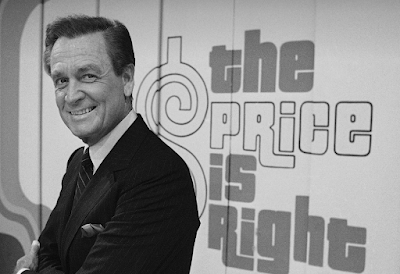Global growth and the European debt crisis continue to be the two main factors shaping the investment climate. Monetary policy has been eased this month in countries accounting for large part of world GDP.
The list includes China, the euro zone, the UK, Denmark, Brazil and South Korea. The Bank of Japan tweaked its asset purchase program to make it more effective. The Reserve Bank of Australia cut rates last month.
In contrast, the Federal Reserve took a more modest step in extending Operation Twist. The minutes to that FOMC meeting did not give those looking for a resumption of QE much to point to for support. Indeed, if anything, there seemed to a hint that it was looking for something else to do, though a cut in interest on reserves (like the ECB recently did) did not appear to have been discussed. Fed officials are watching closely the BOE’s attempt to reanimate the credit creation process.
The US economic data due out may show the stabilization after the recent slowing.
Retail sales likely increased in June for the first time in three months. Both the Empire and Philly Fed regional surveys should recoup some of the steep losses seen last month. Headline CPI may fall to reflect the decline in energy prices (though food prices are rising), the core measure likely rose for the third consecutive month.
Bernanke’s semi-annual testimony to Congress (Tuesday and Wednesday) may be heavily scrutinized for policy clues, but typically this is not the forum for that.
The Fed chairman seeks to explain Fed policy and share its economic assessment. Obviously, it is also about the committee members playing to their constituencies; making sometimes for colorful political theatre.
While fully acknowledging the merit of the Fed’s Lockhart point that Operation Twist need not be over before the a new round of asset purchases can begin, we think the bar to that is quite high.
We do not expect QE to be announced at the next FOMC meeting (July 31-August 1). The annual Jackson Hole gathering in late August may more important that this week’s congressional testimony for fresh insight into Federal Reserve.
The Bank of Canada is the only major central bank to meet this week and it is widely understood to be on hold.
The monetary policy statement the next day (Wed July 18) is probably more important. The low interest rates are arguably inflationary and risking a housing market bubble in some areas, but the weak world growth and uncertainties in the US pose powerful challenges for the economy. Inflation figures will be released at the end of the week. Base effects mean that year-over-year rates are likely to accelerate.
The two main pieces of data from the UK in this week are the CPI and employment report.
Base effects point a continued moderation of price pressures. The economy remains weak and that means the claimant count is likely to rise. This are among the pieces falling into place for an extension of the gilt purchases when the current GBP50 bln program is complete.
Ironically, the euro area economic data is not so important.
The ECB’s delivered its first rate cut this year despite inflation running at 2.4% in May. It is expected to be near the same pace in June, which is reported on Monday. The external accounts typically aren’t market movers, leaving Germany’s ZEW survey on Tuesday as the most market sensitive data.
The market has already taken on board that the Germany economy has slowed since the 0.5% expansion in Q1.
We find that the direction the ZEW is strongly correlated with the DAX.
The DAX has risen a couple of percentage points thus far this month. While this warns of some upside risk for the ZEW, it may overstate the case because the DAX gains were uneven and as of July 12th, it was essentially flat on the month.
More important than the economic data and bond auction are the political developments around the debt crisis.
Two stand out. On Thursday, the German Bundestag debate aid for Spain. Chancellor Merkel will attend and Finance Minister Schaeuble will speak. The euro area finance ministers will meet on Friday and will likely approve the funds for Spain.
As we have argued, European officials are developing a
new strategy for dealing with the crisis for Spain that is different than the one developed for Greece and applied to Ireland and Portugal. The loans may be more 13 years and package will include funds to capitalize a “bad bank”.
It is not coincidental that last week Rajoy’s fourth austerity package in seven months was approved by the Spanish cabinet.
The package was nearly evenly divided between tax increases and spending cuts. It includes a longer work week for civil servants (in line with the private sector, which at 38.5 hours a week is among the highest in Europe), a reduction of transfer payments and a hike in the VAT for most goods. Moreover, unannounced, but still in the pipeline, so to speak, is an energy tax, according to local press reports.
China:
After last week’s data dump, there are no key Chinese economic data, though the June property price report on Tuesday may attract some interest as may Thursday’s flash MNI business sentiment indicator. Many, if not most market observers are skeptical about much of the official data and suspect the economy is growing slower than is being acknowledged. The fact that electricity output was almost 1% lower in June than a year ago is indeed worrisome. This reinforces our sense that the PBOC will continue to ease policy even though the timing is difficult if not impossible to predict
Thus, larger fundamental backdrop is unlikely to change much in the week ahead. If anything, the take away may be some stability in world’s largest economy. The short-term technical condition is less clear. The dollar pulled back at the end of last week against all the major currencies, but further selling is necessary to signal that a meaningful correction is at hand.
Euro:
The net short position increased by 19.5k contracts to 165.7k in the week ending July 10. Bottom pickers add 4.2k contracts to the gross longs, which stood at 36.4k, making it the largest gross long position among the currency futures behind the Australian dollar and Mexican peso. The shorts added almost 24k contracts to 202.1k contracts.
The euro staged a key reversal before the weekend. It made a new two year low and then proceeded to rally and closed above the previous day’s high. The last key reversal recorded in the euro took place after soft US jobs data on June 1 and began a three week advance. Yet this seemingly bullish development has not been confirmed by the other major currencies. Moreover, in the foreign currency rally on Friday, the euro’s relative performance put it in the middle of the G10 pack, gaining a modest 0.38%. Nor are the other technical studies generating bullish signals. To improve the technical tone, the euro needs to overcome resistance first in the $1.2260-90 band and then near $1.2330.
Yen:
The net long position doubled to 9k contracts. Yet what can only be appreciated by looking at the disaggregated data, gross long and short positions were reduced. The gross long was cut by 4k and shorts were cut by 8.8k contracts.
It is difficult to have much enthusiasm for the yen from a technical point of view. It has been confined to a JPY79 handle for three weeks with two minor exceptions that saw the dollar trade as high as JPY80.10. Given that the dollar is flirting with the lower end of its recent range against the yen, short-term players may be more inclined to buy dollars instead of play for a break out.
Sterling:
The net short position rose to 7.6k from 5.4k contracts. The longs increased by 600 contracts and the shorts increased by 2.9k contracts.
Sterling was the strongest of the majors before the weekend, rallying almost 1% to a six day high, just shy of resistance and a retracement objective near $1.56. A trend line drawn off the mid-June and early July highs comes in near $1.5665 at the start of the new week and dropping about 5 ticks a day. This trend line needs to be convincingly broken to lift the technical tone.
Swiss franc:
The net short position was trimmed by 2100 contracts to 17.6k. This was a function of an increase in longs (552 contracts) and reduction of shorts (924 contracts).
The dollar made new highs for the year against the Swiss franc before the weekend before selling off to close just above the previous day’s low. While the price action looks more franc friendly, the near-term price action may be more important. A break of CHF0.9775 may help confirm a near-term dollar correction, which would also be evident in the euro given that the pair is trading like a fixed exchange rate presently.
Canadian dollar:
The net long position was cut in half to 4.3k contracts. This is the smallest net long position since the first half of February. However, both long and short positions increased. The longs rose 1.7k contracts to 24.7k, while shorts grew 6.1k contracts to 20.3k
The US dollar rallied from around CAD0.98 in late April to almost CAD1.0450 in early June. Since then it has been consolidating with a lower bias. The CAD1.01 area is the lower end this recent range and a convincing break may spur a move toward parity with modest support seen near CAD1.0050. Half way through the third quarter, the Canadian dollar shares with the Japanese yen the only major currencies that have advanced against the dollar this period (roughly 0.25% and 0.75% respectively).
Australian dollar:
The net long position doubled to 19.1k contracts, which is the largest in two months. Longs were increased and shorts were cut roughly in equal measure (4.6k contracts and 5.1k contracts respectively). The gross long stands at 54.7k contracts, the largest in the futures market.
The Australian dollar has rallied about 8% of its early June lows. However this month it has been trending lower, in part, perhaps, because the weak domestic data and head winds from the global economy have increased the perceived risk of another RBA cut as soon as August (and if not, September). The inside day recorded on Friday may be a sign the bear case is played out. However, resistance in the $1.0250-$1.0275 needs to be overcome to confirm this scenario.
Mexican peso:
The net long position rose 7.7k contracts to 25.2k. Like the Australian dollar, the net long position is the highest in two months. Longs increased by 8k to 48.6k contracts, while the shorts increased by a couple of hundred contracts to 23.3k.
The US dollar has lost a little more than 9% against the peso since early June. The downside momentum has eased in recent sessions and a shelf has been built near MXN13.24. At the same time the MXN13.50 area marks the upper end of the trading range. In general sentiment seems constructive to the peso, but, the peso is also sensitive to the general performance of the capital markets.






































